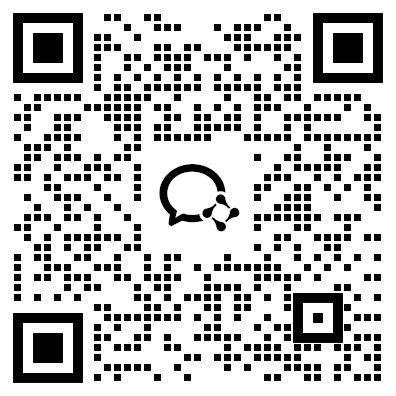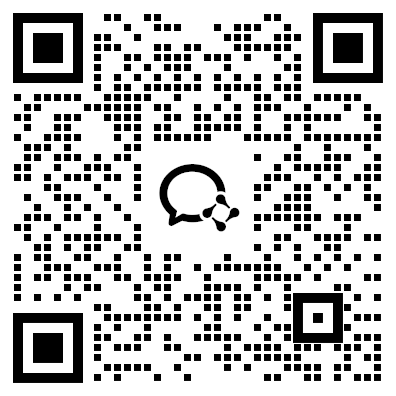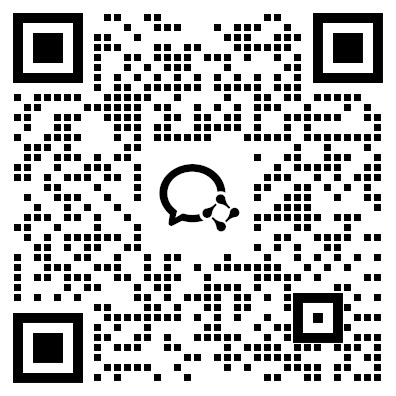选课中心NEW
7099人选课
SAT【0】元讲座
免费学
托福【0】元讲座
免费学
SAT模考网站HOT
39209人预约
托福备考练习HOT
39209人预约
SAT辅导课程NEW
免费报名
AP辅导课程NEW
立即报名
中学生托福课程NEW
立即报名
大学生托福课程NEW
立即报名
【定制】1v1
私人订制
【资料】考前冲刺
精

扫码添加助教
免费领取
备考资料大礼包

扫码关注公众号
本文为大家介绍了如何改善同学们阅读理解相关技巧,希望对大家备考SAT阅读有一定的参考作用。
Reading is one of the important skills in English learning. Its purpose is to enlarge their vocabulary and familiarize themselves with background information about English and to cultivate(培养) students' careful observation and their logic thinking. What is more, it is to improve students' comprehension. I have tried to train my students in the following ways: skimming and scanning, author's viewpoint, structure of the passage, structure of paragraphs, students' anticipation, punctuation and summarizing.
1. Skimming and Scanning
Before starting to read a passage in detail, I first ask the students to take a moment to preview the passage. Read quickly, without pausing to study the details. This is called skim reading. The students ask them to have these in mind: for which the passage was written, what type of passage it is, what the purpose and attitude of the author is and what the style of the article is. After having skimmed the passage, the students can study the passage in more detail, reading more slowly and carefully and looking for specific information that the questions are concerned with. This is called scanning. When students do the scanning, I ask them to read without any sound, to notice only the key words and not to pay too much attention to the new words but to pay the sense group and the main meaning of the sentence. Especially pay attention to the first sentence and the last sentence of the paragraph.
2. The author’s viewpoint
In reading a passage I ask the students to makes guesses about the position of the author. Is the author neutral or does the author show his own opinion. The author often shows his opinion either by adding certain phrases or by adding a value to a word. I let the students to pay more attention to these words that the author can add, like luckily, unfortunately to show that he is pleased or not pleased with something. He can also add words, which show his surprise, regret or other emotions, for example surprisingly, to shock, unexpectedly, regrettably, pity, desirable, to be disappointed, etc. The author may also use words to indicate the level of certainty, for example: certain, obviously, undoubtedly, naturally, always, often, likely, probably, maybe, unlikely, hardly, rarely, never, etc. Another possibility is that the author adds words to comment on more or less objective facts.
3. The structure of the passage
I let the students know that the structure of a passages mostly with a title and sometimes a subtitle. After that, the introduction and the body followed by a conclusion or summary. An important aspect of reading is prediction. The better the student can predict what he or she is going to read, the faster and more effective he or she will read. The prediction process begins with the title. The introduction mostly informs the student about what he can expect. The body consists of paragraphs. Each paragraph deals with one aspect of the subject matter. Paragraphs are linked in a logical way; and the conclusion puts the subject matter in the right perspective. I asked the students' to form. the main idea of the passage by putting the topic sentence of every paragraph.
4. The structure of paragraphs
I tell the students that a paragraph is a group of sentences. A typical paragraph consists of three parts. The first sentence usually contains the topic sentence, which is the heart of the paragraph. The topic sentence contains the new aspect of the subject of the passage. The second part of the paragraph contains sentences, which develop the aspect. These sentences may contain arguments, explanations, details, examples, and other supporting evidence. The last sentence of a paragraph is often a summary of the paragraph or a linking sentence to the next paragraph. So we can get a good impression of the contents of the paragraph by the structure.
5. Students' Anticipation(推测)
I let students know that even if you have a wide and flexible vocabulary you will encounter words of which they do not know the meaning. Very often there is not enough time to look up all those words in a dictionary. This means that students should be able to guess the meaning of the word. This is often possible if the student understands the relationships between words in meaning and form. I ask the student to notice the word formation if they meet new words. From the roots and affixes and conversion and compounding, they learn to try to guess the meaning of the word according to the content.
To make a good guess at the meaning of the word, I ask students to pay attention to the clues; indications that help him find that meaning. If you meet new words and try to find if there are synonyms and repeated ideas of the new words. I teach students to follow these steps: 1) Determine the word class, i.e. a verb, a noun, an adjective, an adverb, etc. 2) Determine its function in the sentence, i.e. is it an attributive or an adverbial? 3) Contextual clues, is the context in which we find this word positive or negative; what does the context tell us about the word? 4) Word formations, is there any relation between this word and a word that is familiar to you? 5) Guess the eventual meaning of the word logically and reasonably.
6. Punctuation
I teach the students to know punctuation is partly based on grammar. For example, commas are often used to separate clauses. If the student understands the meaning and usage of punctuation marks, it will be easier to understand the grammatical structures. Punctuation marks also indicate how the author wants the student to interpret a piece of passage. For example, if the author puts something in brackets, the part of the sentence should be interpreted as an addition to the sentence. Sometimes the parentheses indicate the author's point of view.
7. Summarizing
We know that it is very difficult to remember the complete contents of long passages. For that reason it is often advisable to make notes of information in the passage that is essential for the student. The result is a short outline of the passage containing all aspects of the passage. In this way students can grasp the main ideas of the passage. I ask the students to follow these steps: 1) Familiarize(熟习) with the material. After students have read the passage or a section of it, they can start summarizing. The length of the section read through depends on the structure and the complexity(复杂) of the passage. 2) Select important information. I ask the students to go through each paragraph, sentence by sentence, asking themselves which information is absolutely essential to the argument. They should point out complete sentences as much as possible. An alternative is to underline or highlight important sentences or phrases. Pay attention to these important points: author, title, reason why the passage was written, purpose, theme, key words, link words, all major aspects, explanations, author’s opinion. Less important points: introduction, summary, repetition, examples, important figures and dates. 3) Paraphrase the information. I ask the students to point out the information of the previous step in their own words. And writing down information in their own words forces them to completely understand what they are writing down. They should try to shorten long and complex sentences into much shorter ones. 4) Insert links between sentences and paragraphs. Let students make sure that the connection between sentences is clear and logical and that each group of sentences smoothly fit in one paragraph. 5) Adjust the length of the summary. If they have to make a summary as part of an assignment .
SAT水平能力测试【0元免费测试】

 资料下载
资料下载
【SAT】SAT官方指南题目合集10套
发布时间:2024-04-15添加新东方在线美本助教号
回复【美本资料】获取
SAT阅读+文法+数学专项题型练习册
发布时间:2024-05-31添加新东方在线美本助教号
回复【美本资料】获取
机考SAT-可汗练习题
发布时间:2024-02-29添加新东方在线美本助教号
回复【美本资料】获取
机考SAT-CB官方样题
发布时间:2024-02-29添加新东方在线美本助教号
回复【美本资料】获取
《学科留学百问 (AP-IB-A Level)》
发布时间:2023-02-22添加新东方在线美本助教号
回复【美本资料】获取
2024中国学生留学备考白皮书
发布时间:2023-02-22添加新东方在线美本助教号
回复【美本资料】获取
2023北美考试一本通高中篇
发布时间:2023-02-22添加新东方在线美本助教号
回复【美本资料】获取
新东方SAT阅读讲义
发布时间:2023-02-06添加新东方在线美本助教号
回复【美本资料】获取
2023北美考试一本通高中篇
发布时间:2024-02-29关注美本留学家长帮微信订阅号
回复【美本资料】获取
2024中国学生留学备考白皮书
发布时间:2019-12-19添加新东方在线美本助教号
回复【美本】获取
《学科留学百问 (AP-IB-A Level)》
发布时间:2019-12-19添加新东方在线美本助教号
回复【美本资料】获取
机考SAT-CB官方样题
发布时间:2019-12-19添加新东方在线美本助教号
回复【美本资料】获取
机考SAT-可汗练习题
发布时间:2019-12-19添加新东方在线美本助教号
回复【美本资料】获取
SAT阅读+文法+数学专项题型练习册
发布时间:2019-11-28添加新东方在线美本助教号
回复【美本资料】获取

添加美本助教
即可获取美本资料大礼包

 推荐阅读
推荐阅读
在2024年的QS学科排名中,英国大学再次展现了他们在教育领域的卓越表现。这次排名中,英国大学在16个学科领域取得了世界第一的成绩,为其在全球教育界树立了新的标杆。
来源 : 网络整理 2024-04-23 11:16:49 关键字 : QS学科排名,英国大学qs学科排名
市场营销作为当代商业领域中至关重要的学科之一,一直备受关注。为了帮助读者更好地了解2024年全球市场营销学科的最新发展和排名情况,本文将介绍QS世界大学市场营销学科的排名榜单,并提供相关的官网链接供读者参考。
来源 : 网络整理 2024-04-23 10:21:37 关键字 : 市场营销学科排名,qs学科排名
备受关注的2024年酒店管理学科全球大学排名榜单终于揭晓,给全球学子带来了巨大的惊喜和期待。作为酒店管理学科领域的权威排行榜,该榜单汇集了各大知名院校和学者的投票和研究结果,为学生们提供了一份权威的选校参考指南。
来源 : 网络整理 2024-04-23 10:15:16 关键字 : 酒店管理学科排名,qs学科排名
每年QS世界大学统计与运筹学学科排名榜单都受到广泛关注,2024年的排名榜单也引起了极大的关注和讨论。首先,让我们来看一下2024QS世界大学统计与运筹学学科排名榜单的前几名。
来源 : 网络整理 2024-04-23 10:10:12 关键字 : 统计与运筹学学科排名,qs学科排名
随着2024QS世界大学经济与计量经济学学科排名榜单的发布,我们可以全面了解到这一领域的最新动态。本文将为您详细介绍2024QS世界大学经济与计量经济学学科排名榜单,解读其中的重点内容,并对我国相关大学在排名中的表现进行分析。
来源 : 网络整理 2024-04-23 10:03:55 关键字 : 经济与计量经济学学科排名,qs学科排名
最新发布的2024QS世界大学社会政策与行政管理排名榜单已经震动了全球教育界。这一排名榜单是依据世界知名教育机构QS(Quacquarelli Symonds)的权威数据和专业评估,为我们提供了一份准确且独具参考价值的全球大学排名。
来源 : 网络整理 2024-04-22 17:01:59 关键字 : 社会政策与行政管理学科排名,qs学科排名
社会学作为一门独具特色的学科,对于了解人类社会的发展和变迁起着举足轻重的作用。每年,QS世界大学社会学排名榜单会揭晓全球各大高等院校在这一领域的表现,并成为了各界人士瞩目的焦点。今天,让我们一起来揭晓2024年的榜单,并深入探讨排名的背后故事。
来源 : 网络整理 2024-04-22 16:56:00 关键字 : 社会学学科排名,qs学科排名
在当今竞争激烈的社会中,选择一所优秀的大学对我们的未来发展至关重要。随着法律行业的日益发展和全球化的趋势,了解和掌握国际上优秀的法律学府成为了无比重要的事情。而2024QS世界大学法律与法律研究排名榜单正是我们选择合适学府的权威指南。
来源 : 网络整理 2024-04-22 16:51:49 关键字 : 法律与法律研究学科排名,qs学科排名
2024QS世界大学教育与培训排名榜单,作为权威的评估之一,给出了全球范围内的学府排名。本次榜单覆盖了各个学科领域,综合评估了学校的教学质量、师资水平、科研实力等多个方面,旨在为学生和家长提供一个参考。
来源 : 网络整理 2024-04-22 16:48:08 关键字 : 教育与培训学科排名,qs学科排名
政治学作为一门研究人类政治行为、政治制度、政治思想等内容的学科,一直备受关注。近日,2024QS世界大学排名公布了最新的政治学学科排名榜单,引起了广泛的关注和讨论。
来源 : 网络整理 2024-04-22 16:38:53 关键字 : 政治学学科排名,qs学科排名

自动领取备考资料大礼包

1. 打开手机微信【扫一扫】,识别上方二维码;
2.添加【美本助教】,自动领取留学备考资料大礼包。

 SAT直播/精讲课
SAT直播/精讲课
 托福精讲系统课(旗舰版)
托福精讲系统课(旗舰版)
 托福直播VIP小班
托福直播VIP小班
 公开讲座
公开讲座
真实了解自己的水平,为备考做好规划!
价格 : ¥0元
真实了解自己的水平,为备考做好规划!
价格 : ¥0元
真实了解自己的水平,为备考做好规划!
价格 : ¥0元

 资料下载
资料下载
添加新东方在线美本助教号
回复【美本资料】获取
添加新东方在线美本助教号
回复【美本资料】获取
添加新东方在线美本助教号
回复【美本资料】获取
添加新东方在线美本助教号
回复【美本资料】获取
添加新东方在线美本助教号
回复【美本资料】获取
添加新东方在线美本助教号
回复【美本资料】获取
添加新东方在线美本助教号
回复【美本资料】获取
添加新东方在线美本助教号
回复【美本资料】获取
关注美本留学家长帮微信订阅号
回复【美本资料】获取
添加新东方在线美本助教号
回复【美本】获取
添加新东方在线美本助教号
回复【美本资料】获取
添加新东方在线美本助教号
回复【美本资料】获取
添加新东方在线美本助教号
回复【美本资料】获取
添加新东方在线美本助教号
回复【美本资料】获取

自动领取备考资料大礼包

1. 打开手机微信【扫一扫】,识别上方二维码;
2.添加【Ella助教】,自动领取留学备考资料大礼包。
 阅读排行榜
阅读排行榜
 相关内容
相关内容